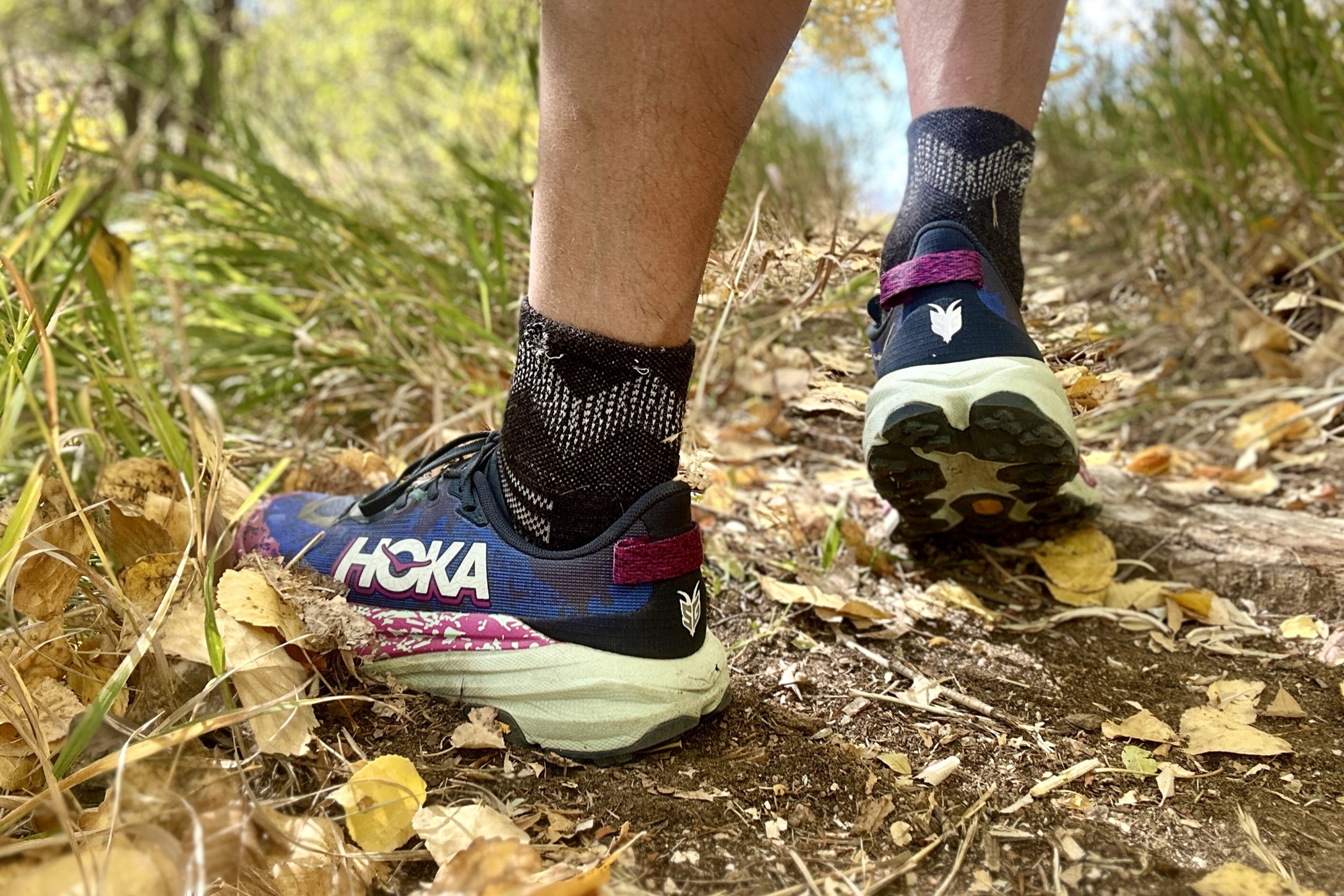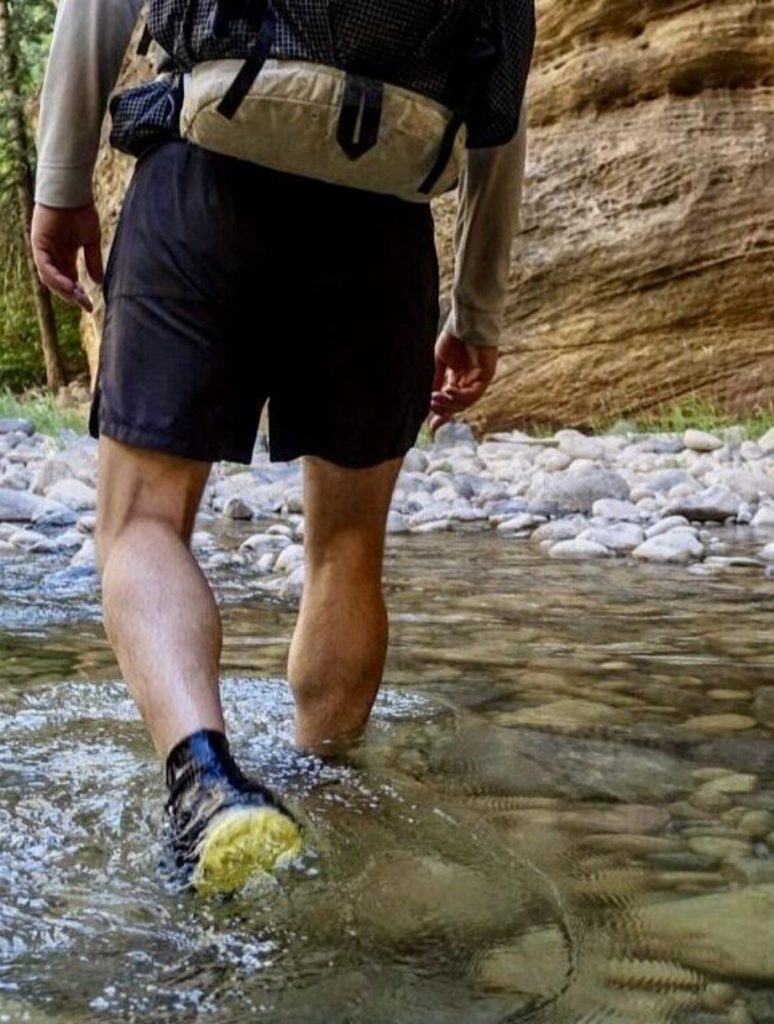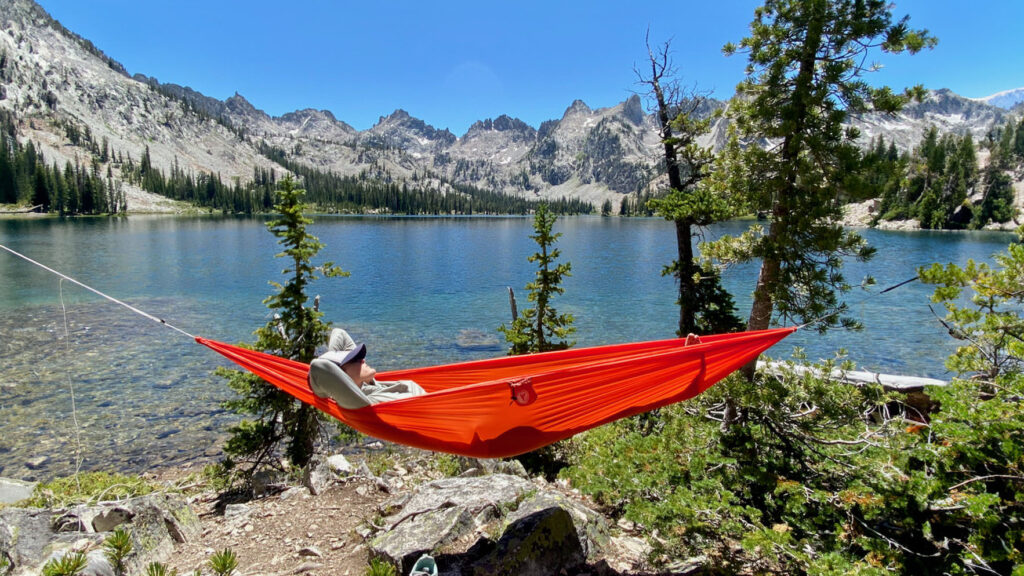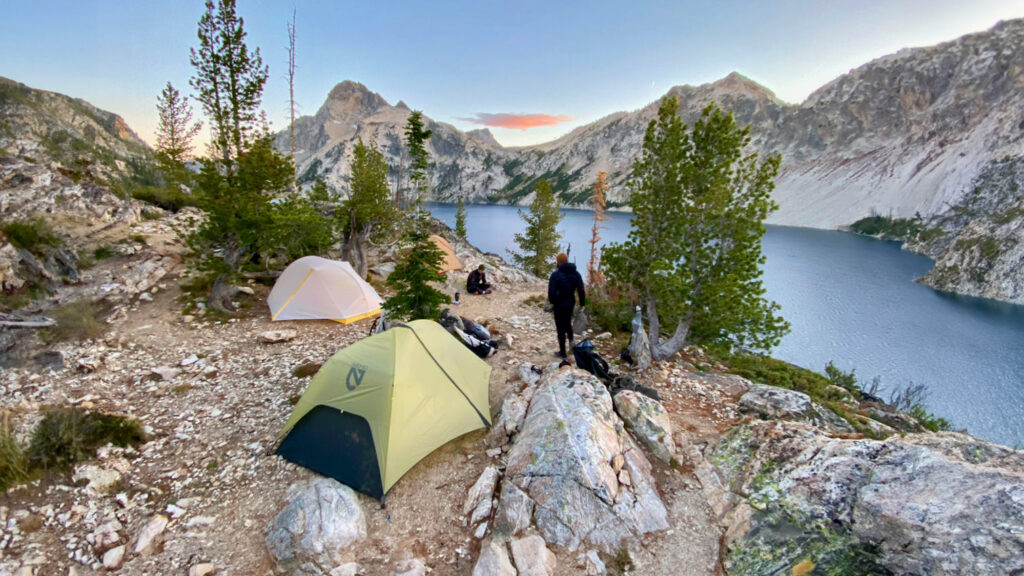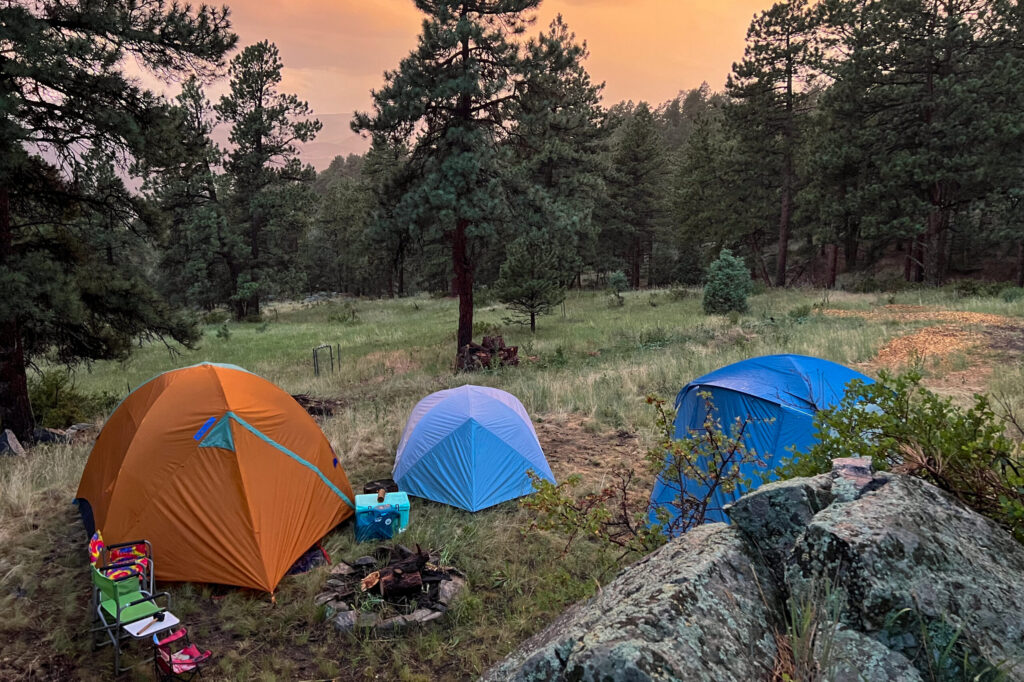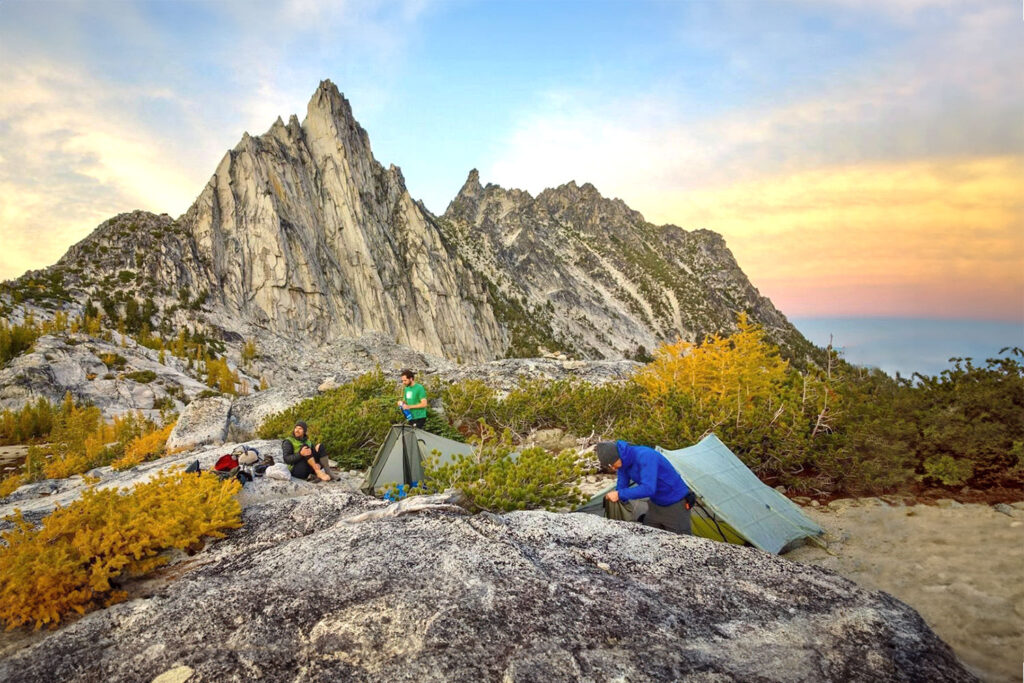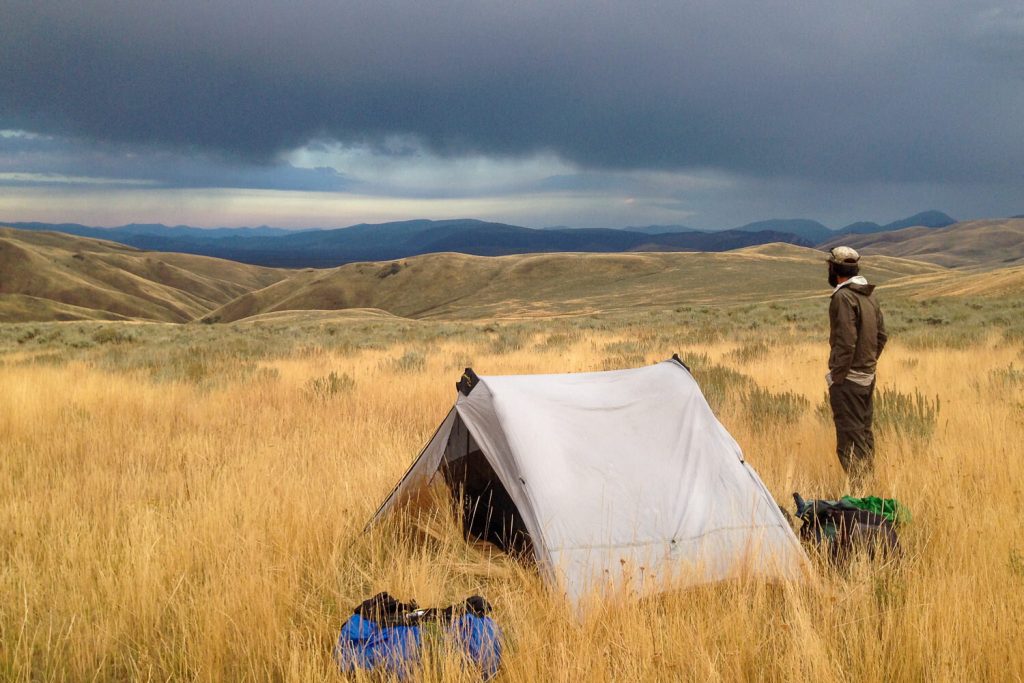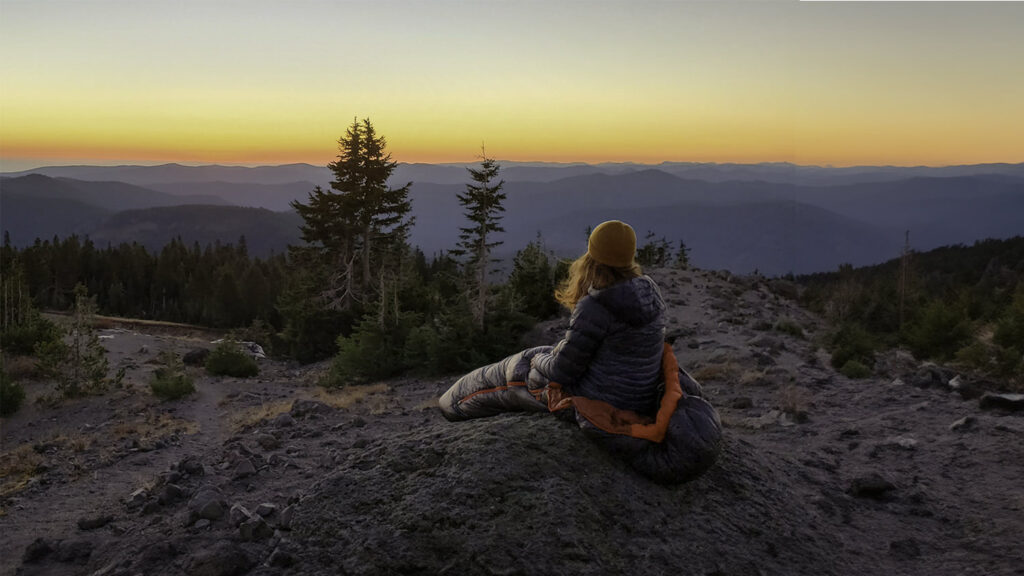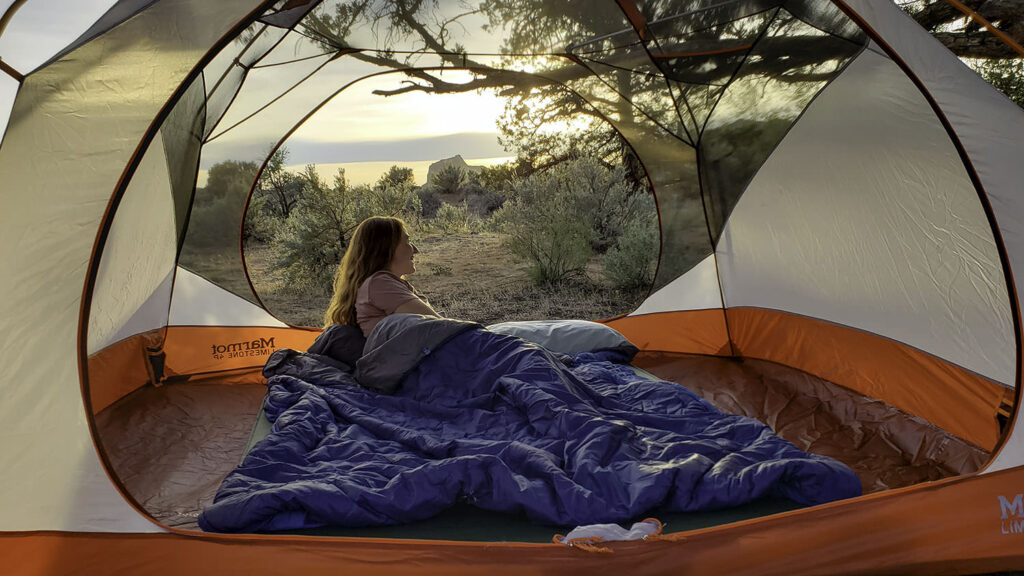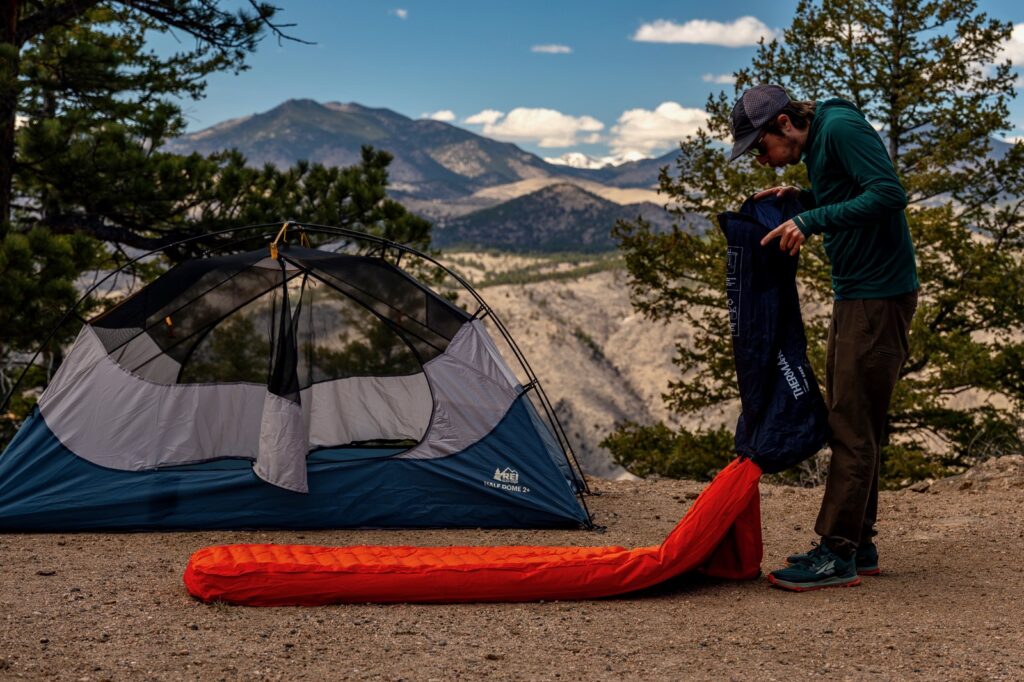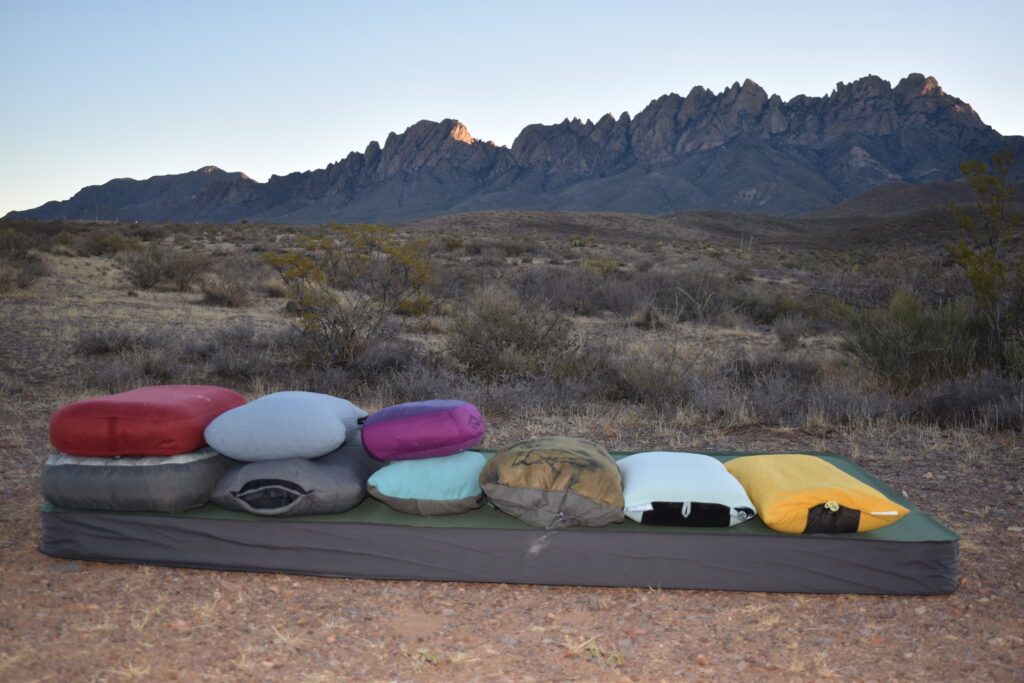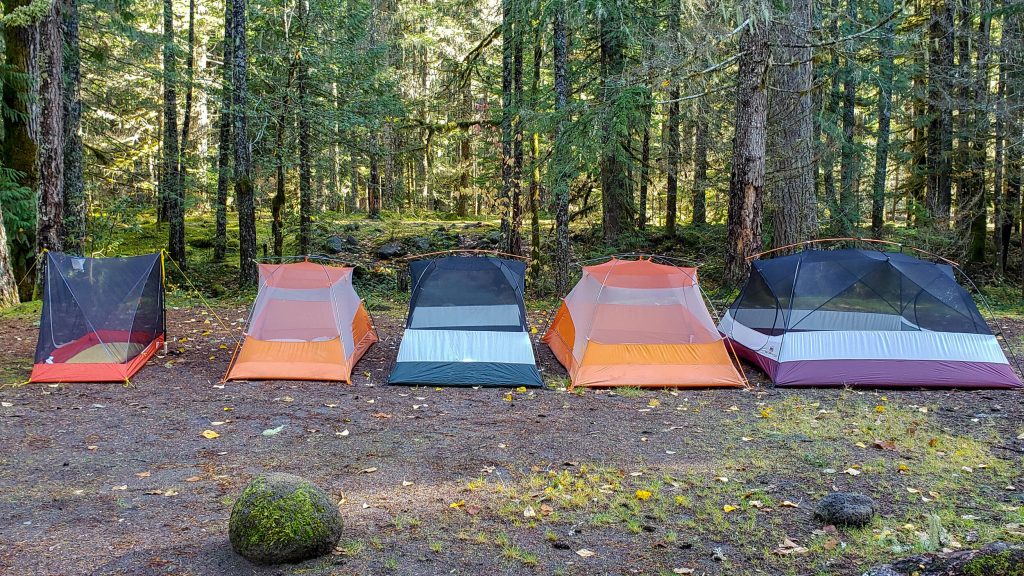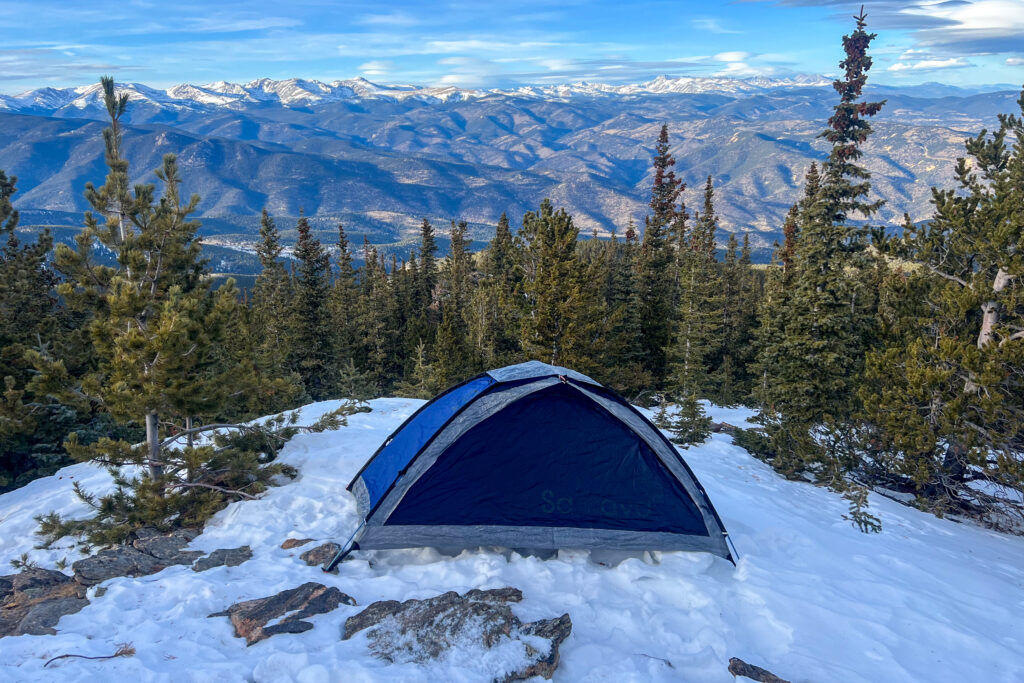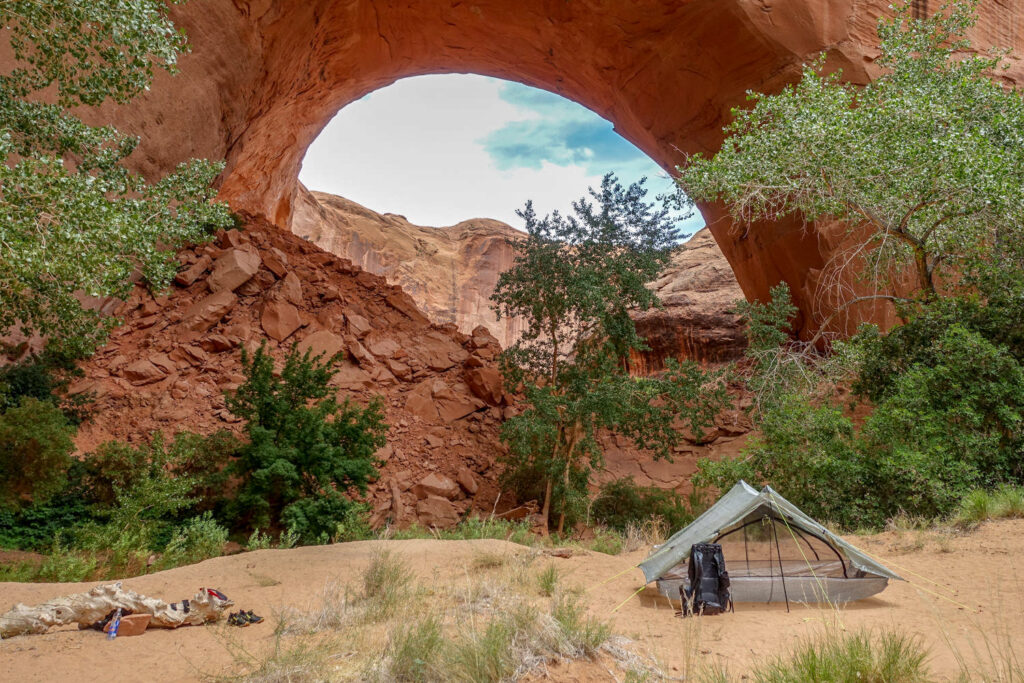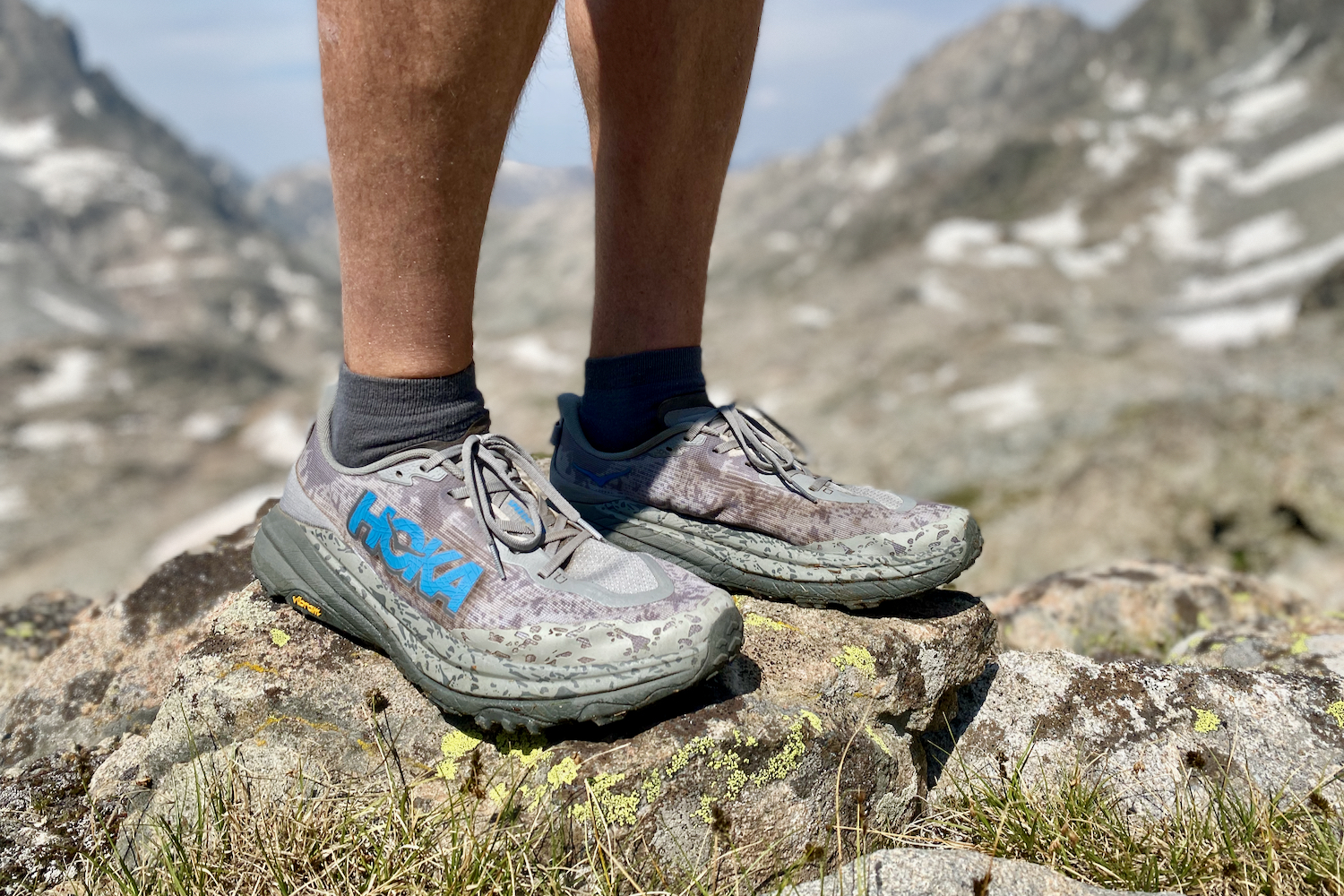
Bottom Line
The HOKA Speedgoat 6 is a good choice when it comes to support, traction and weight savings, placing it on both our best trail running shoes guide and best hiking shoes for men guide. CleverHiker Editor Ian Krammer hiked 500+ miles and more than 100 peaks in the Colorado Rockies in the Speedgoat 6, where they kept him feeling fresh and light day after day.
This version gets some of the biggest changes to a Speedgoat model we’ve seen. Long time fans will immediately notice the soles are stiffer than version 5. Our testing finds they’re still tremendously comfortable, but we no longer consider Speedgoats the cushiest ride out there. The 6 swaps out the foam-forward cruiser feel that we’ve come to love for a ride that’s stiffer, snoozier and just a little more run-of-the-mill.
Other large changes include a significant reduction in foam, a thicker tongue, and a smaller heel flare. The toe box and midsoles are narrower as well.
It’s not the Speedgoat you might remember, but that’s okay. This version is still a top performer, and there’s a lot to love. The 6 is as supportive, grippy, and breathable as ever, and comes in a ton of unique colorways to compliment any style. The Speedgoat 6 is a worthy contender for any trail – as long as you don’t let nostalgia get in the way.
Quick Specs
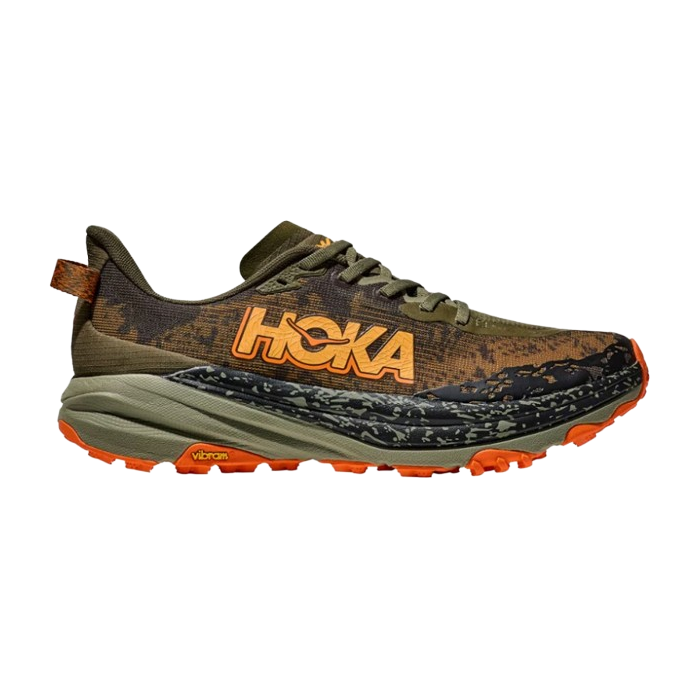
Men’s HOKA Speedgoat 6
Good Balance of Comfort & Traction
CleverHiker Rating: 4.3/5
Price: $155
Weight (Pair): 1 lb. 3.6 oz.
Heel-to-Toe Drop: 5 mm
Pros
- Cushy soles
- Excellent traction
- Great arch support
- Lightweight
- Roomy toe box
- Breathable
- No break-in needed
Cons
- Uppers and midsoles less durable than some
- Stiffer midsoles than prior versions
- Toebox not as wide as prior versions
- Dovetail heel may take getting used to
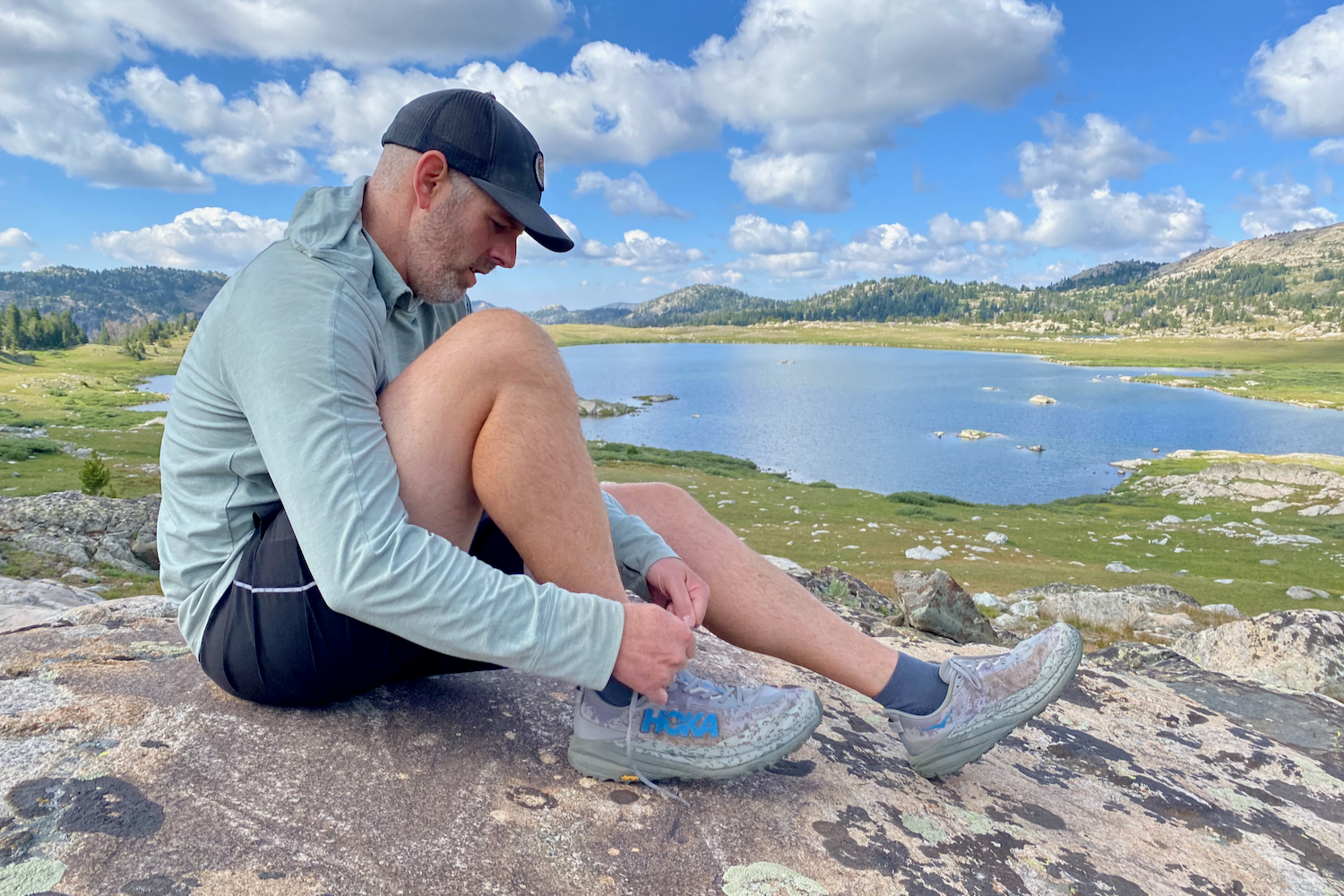
Comfort
The HOKA Speedgoat 6 preserves many of the comfy elements we’ve always loved about this line. Its slightly rockered profile supports a natural gait. Effective arch support cradles our feet through miles of rough trail in the backcountry.
This shoe has a super tall stack height – 40 mm – that absorbs shock well. Most of that height is foam that blocks sharp rocks and pokey roots, although they earn a lower score for responsiveness as a result. The airy mesh uppers are super breathable, so our feet stay cool and dry on hot summer days.
However, the Speedgoat 6 is stiffer compared to prior versions due to a new EVA foam formula. The advantage is that the Speedgoat 6 is more responsive and springy, which we noticed on technical trails full of roots and rocks. The downside? Combined with a reduced swallowtail at the heel, the 6 loses much of the cushy feel we loved about prior versions.
The fit is also narrower through the toe box and heel. Ian finds it is more agile and stable – although he has narrow feet with high arches. It may miss the mark if you like more toe room or have wider feet, but it does come in a wide version.
Overall, these updates feel like a slight step backward in comfort. The shoe isn’t as cushy, forgiving, or flexible as previous Speedgoats, and it took a 10- to 15-mile break-in period before they softened up. If you loved earlier versions, these changes might be a dealbreaker — though they still lead the pack compared to most of the other trail shoes we tested.
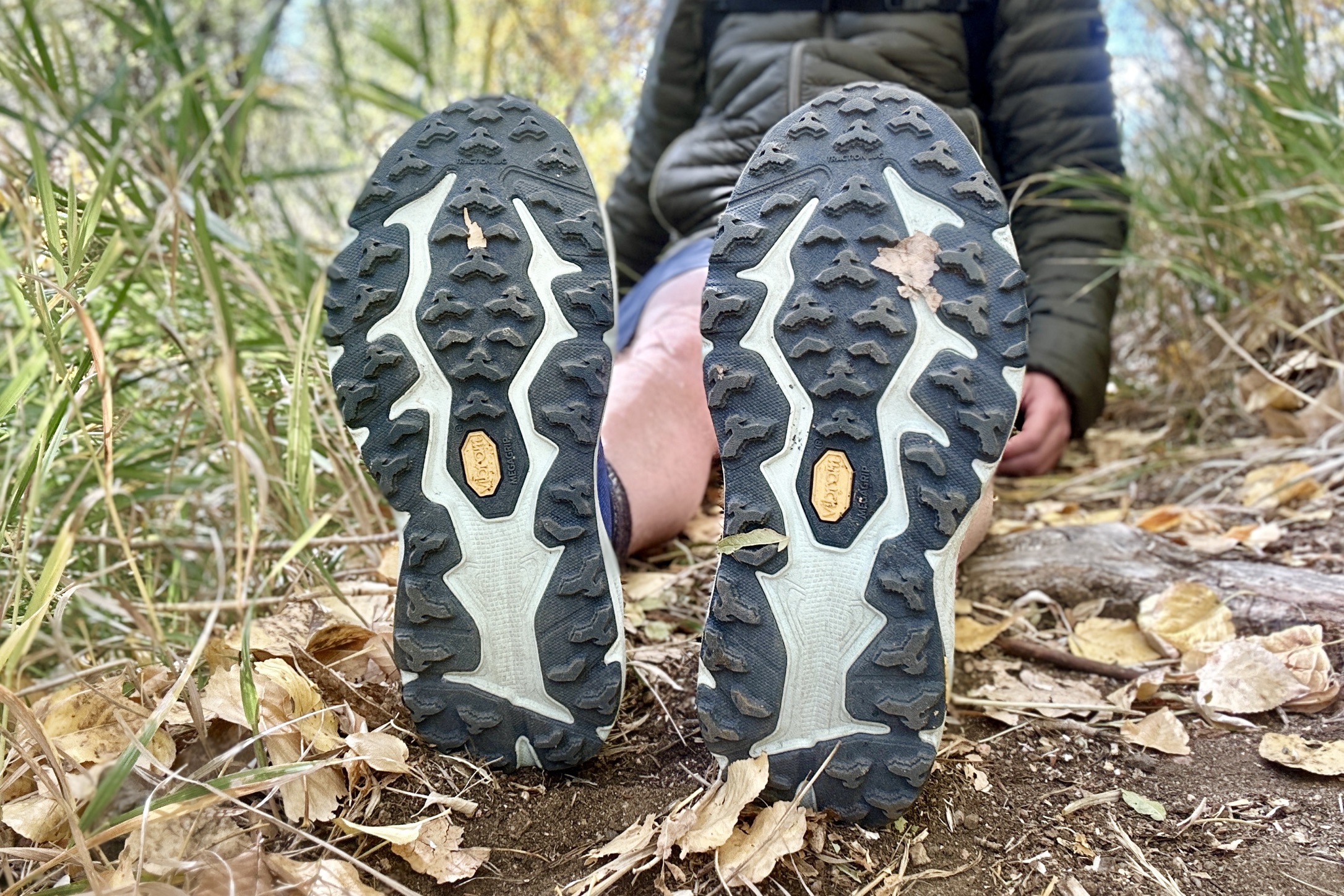
Traction
We ranked the Speedgoat 6s highly for traction. HOKA redesigned the tread pattern on these shoes, adding more lugs at the forefoot for better grip on ascents. We also appreciated the new design through the center and sides for increased lateral control and added stability, and the Vibram rubber blend is sticky and reliable on most terrain.
Content Editor Ian Krammer has tested these shoes in some of Colorado’s most challenging landscapes. The biggest difference he noticed was the increased number of smaller lugs through the midfoot and forefoot, which gave better ground contact and grip on ascents. On moderate trails and mixed terrain, the Vibram soles felt tacky and sticky, biting into the ground for a firm grip.
We have a few gripes, though. The heel area suffers in this change. HOKA dropped the number of lugs at the heel from 12 to only 7 and dramatically reduced the size of the swallowtail. Translation: the Speedgoats give an underwhelming performance on steep downhills. Also, these shoes feel less reliable on slippery surfaces, a drawback for routes with lots of slick rocks or wet and icy conditions.
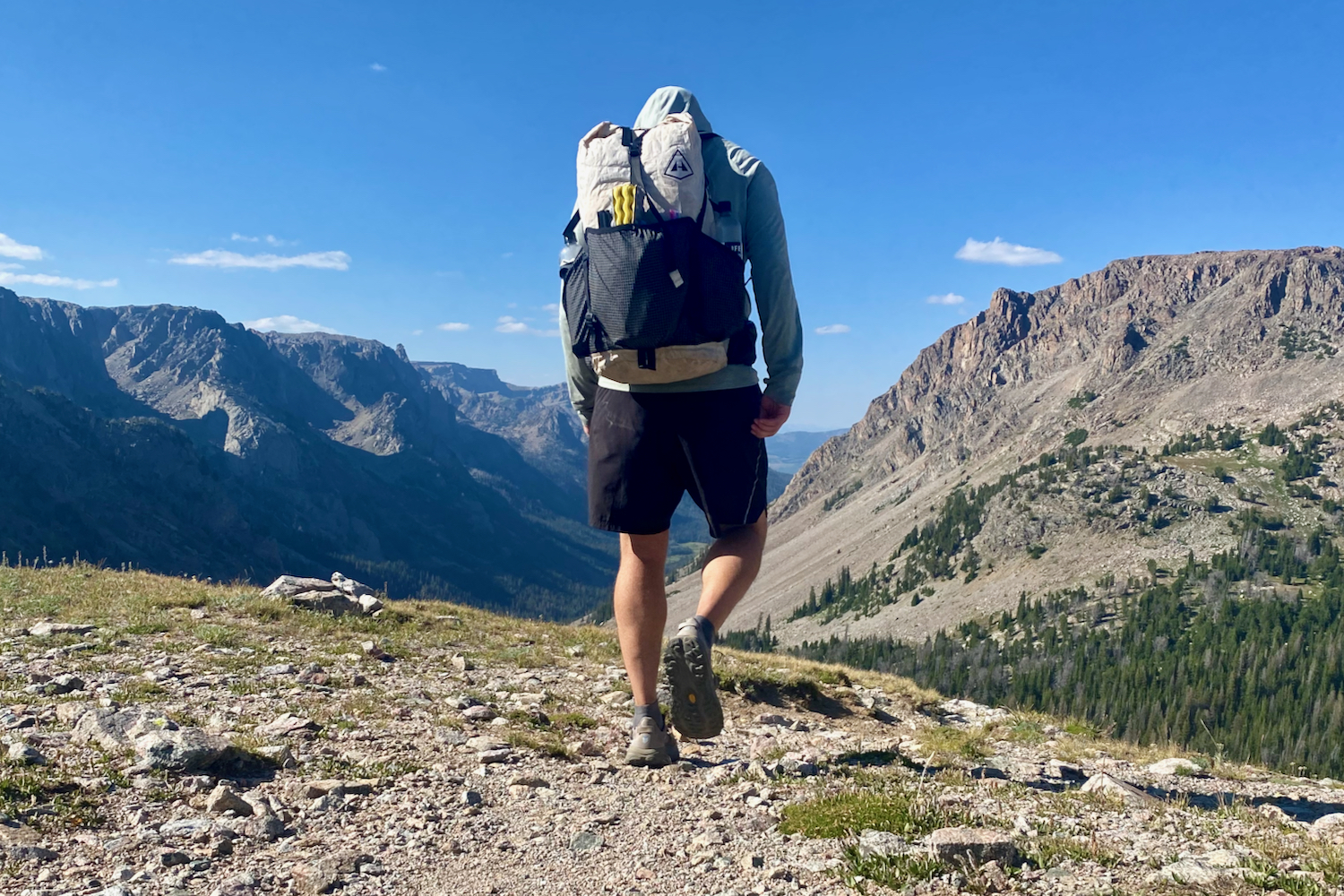
Weight
Each shoe only weighs 9.8 ounces – that’s only 1 pound, 3.6 ounces for the pair – placing the Speedgoat 6 solidly in the middle of the pack. Thanks to a woven mesh upper, airy foam soles, and minimalist components from the thin laces to simple TPU overlays, these things won’t weigh your feet down.
This lower weight helps minimize fatigue and strain so we could hike farther without discomfort, and the dry times and breathability are excellent.
The sacrifice for lighter materials, though, is much less durability. The sheer amount of mesh and lightweight foam doesn’t offer strong defense against sharp rocks and debris on the trail. However, if your top priority is a fairly fast, lightweight shoe for running and hiking, the Speedgoat gets the job done.
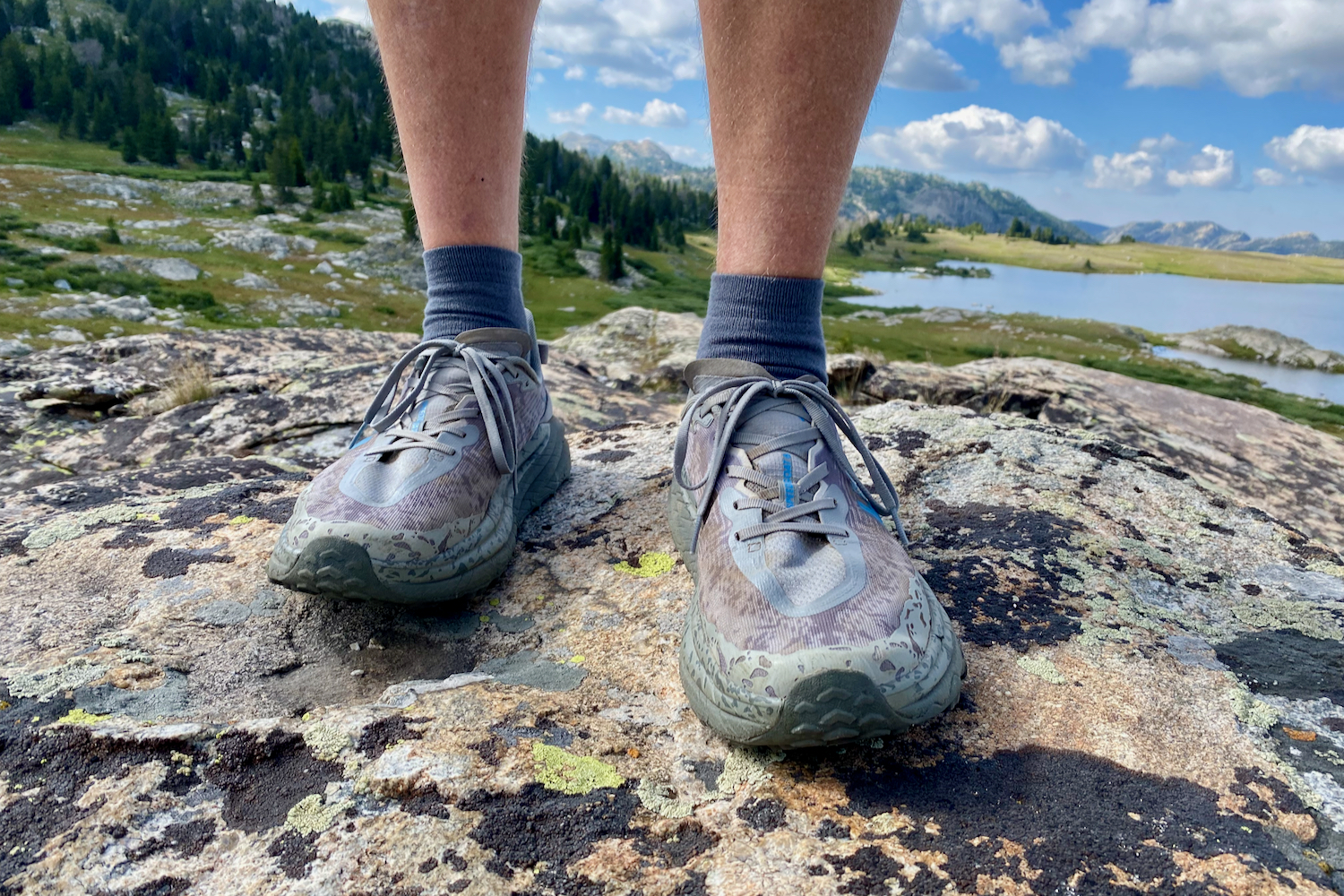
Durability
There’s no way around it – the Speedgoat 6 isn’t the most durable trail runner out there. We gave this shoe a low score compared to the competition when it comes to longevity, with our pair breaking down around 300 miles of running and hiking.
Thorough testing finds that after point, the mesh uppers begin to blow out at the toes. The overlays, including the HOKA logo, begins to peel off. We also find the foam soles shredding along the sides. For longevity’s sake, consider saving these for trips on established routes where speed and comfort are priority, or plan to buy a couple of pairs if you’re having a big-mileage season.
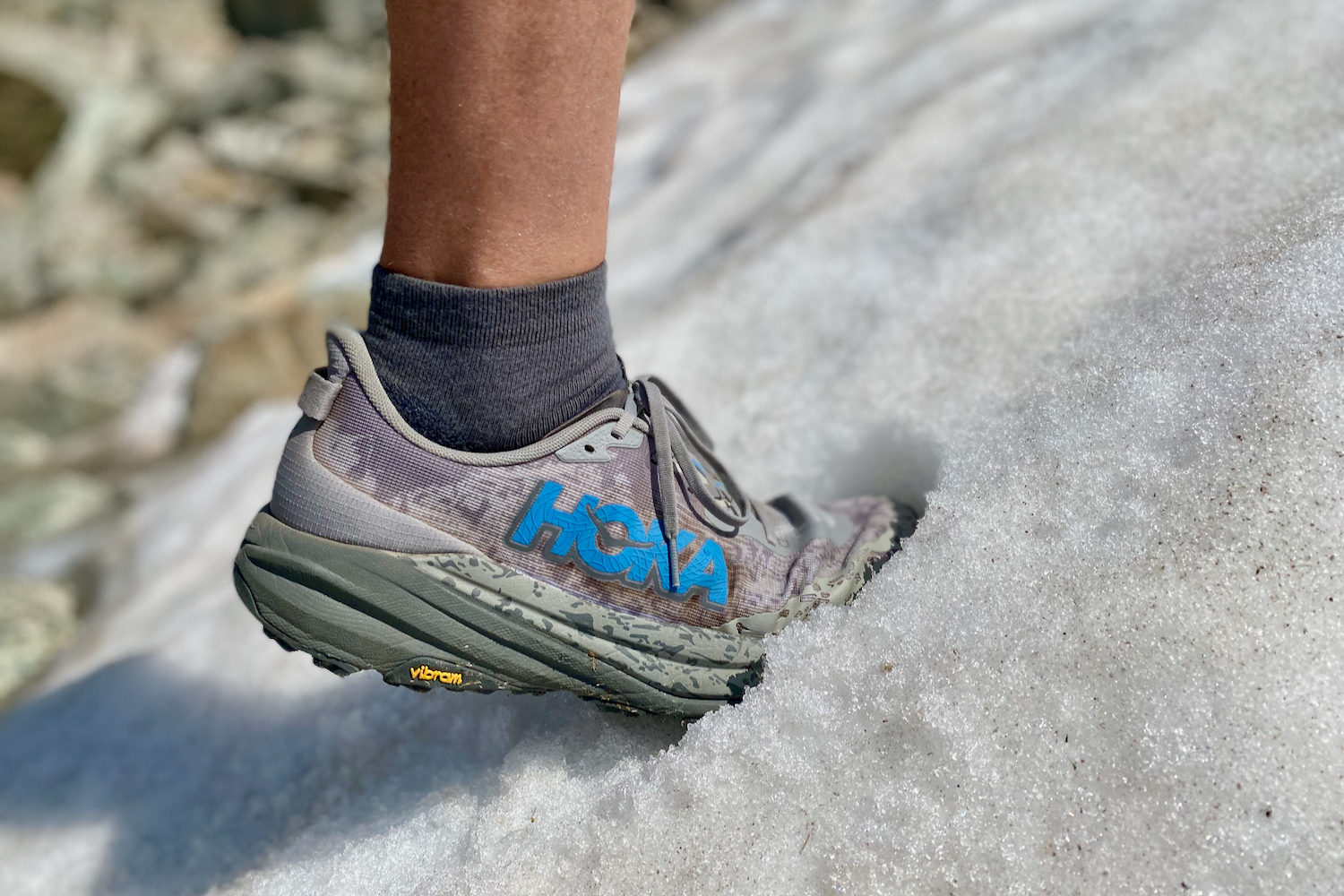
Weather Resistance
The HOKA Speedgoat 6 prioritizes breathability over weather resistance. The mesh uppers take on moisture very easily – but they dry so fast, we don’t mind much. In our experience, they dry in 45 minutes or less on warm summer days, a dream for routes with occasional wet areas or rainy conditions. Their lightweight build and airy uppers is why Ian loves these shoes for summer hiking – paired with thin socks, he plows straight through creek crossings.
But if you’re hiking in muddy, rainy, or cold weather, consider shoes with waterproof membranes. Waterproof options will repel water more effectively and even retain a bit of heat. HOKA offers the Speedgoats in a waterproof GTX version and a high-top Mid-GTX version forspeedgoat 6 shoulder season hikes and questionable weather forecasts.
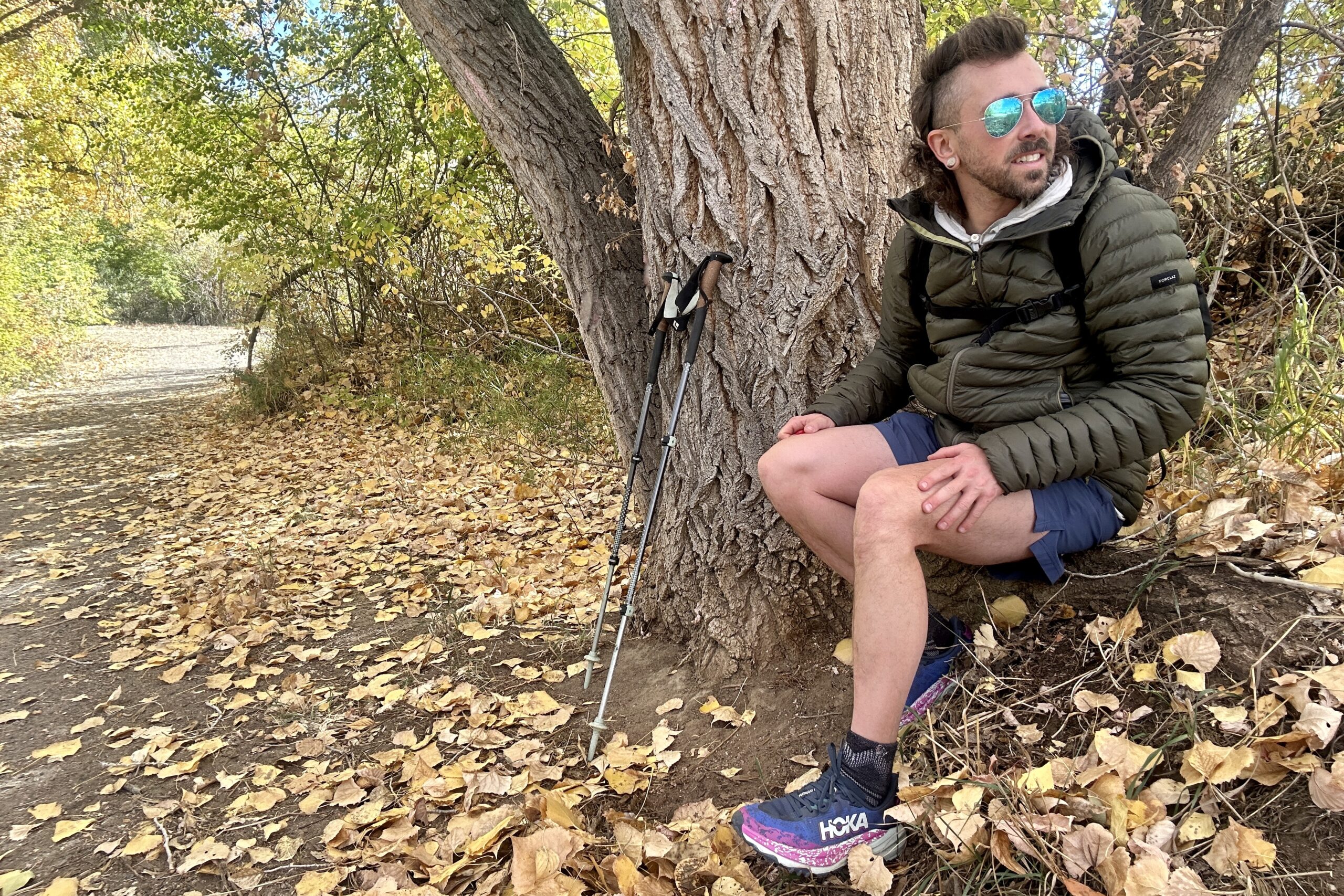
Should You Buy the Hoka Speedgoat 6?
The Speedgoat 6 is a good option for trail runners, hikers, and backpackers looking for a breathable shoe with a comfortable ride. They excel on technical terrain thanks to their balance of cushion and stiffness. The uppers are flexible and fast-drying, which makes them an awesome choice for summer trail running, hiking, and backpacking. The updated tread pattern provides reliable traction, especially on ascents and crossing rocky, uneven surfaces. With their fair price and bold, funky color options, the Speedgoat 6 are an easy pick for hitting the trails in style.
However, fans of previous Speedgoat models who loved their super cushy soles and roomier toe box may find the updates too drastic. This version still offers thick cushioning we know and love, but it’s more stiff and structured, the swallowtail heel isn’t as big, and the fit is more narrow. They’re also not the most durable option beyond 300 miles. That said, if you embrace the changes, the Speedgoat could be your glass slipper for summer adventures.
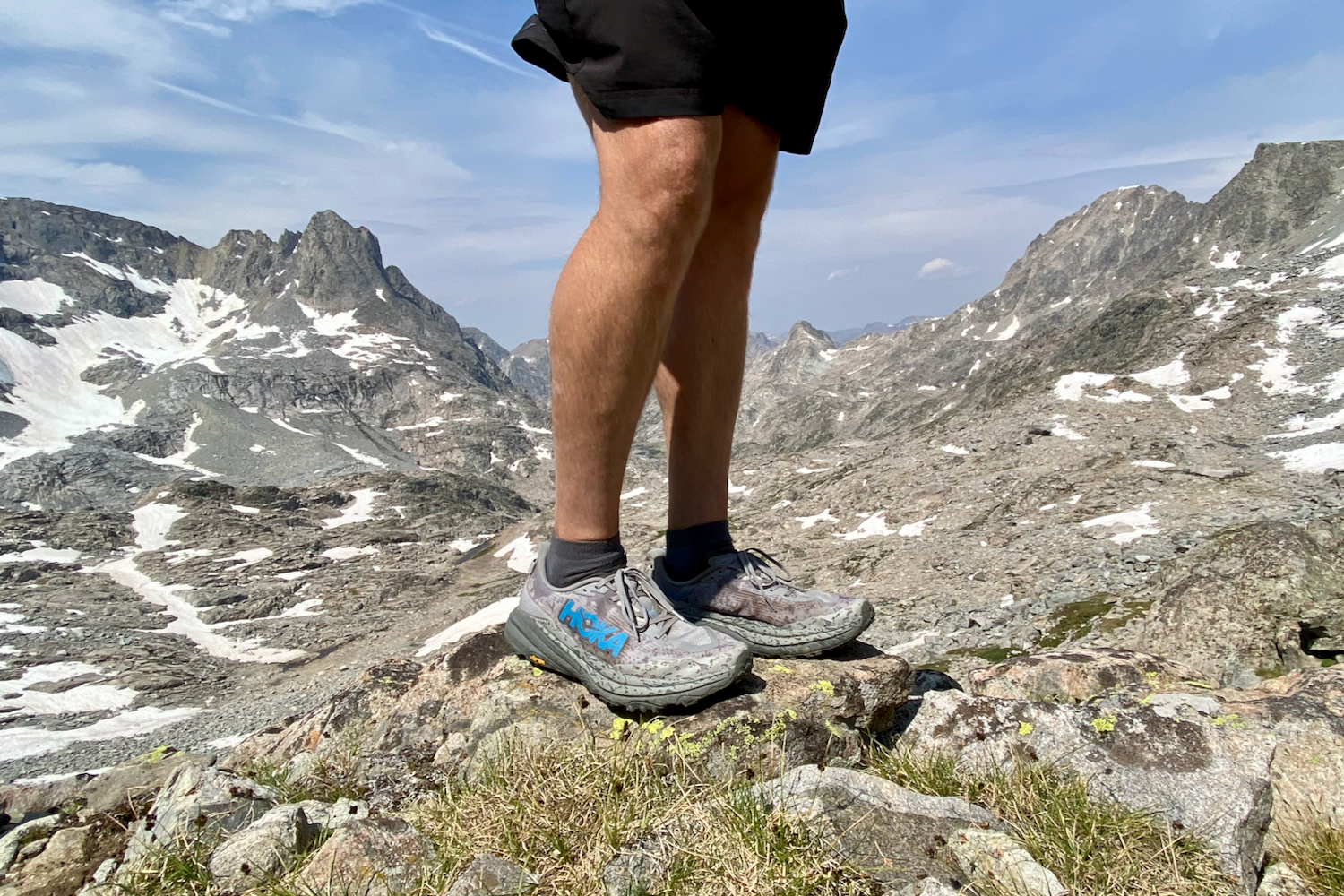
What Other Hiking Shoes Should You Consider?
Want to see how the HOKA Speedgoat 6 compares to our other top picks? Pop over to our lists of the best hiking shoes for men and best trail running shoes for men. And if these caught your eye, consider these other winners:
North Face Vectiv Enduris 4 Review: Long-time HOKA Speedgoat fans, rejoice! The Vectiv Enduris 4 is similar to older versions of the Speedgoat 4 and 5. We highly recommend these for a plush, cushy foam midsole, excellent lacing system, and a big swallowtail heel for long, cruiser miles on moderate terrain.
Saucony Peregrine 15 Review: The Peregrine 15 is one of the lightest shoes we’ve tested. It’s a great choice for everything from mellow flats to technical trails and mountain climbs with a stable chassis and a good all-around performance.
Brooks Cascadia 18 Review: If you like the firmer midsole support and lightweight mesh upper of the Speedgoat 6, consider checking out the Cascadia 18. It’s more durable, supportive, and affordable for a similar ride on most landscapes.
